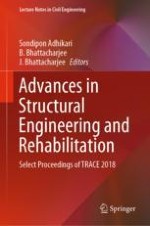2020 | OriginalPaper | Buchkapitel
Mix Design and Factors Affecting Strength of Pervious Concrete
verfasst von : Bishnu Kant Shukla, Aakash Gupta
Erschienen in: Advances in Structural Engineering and Rehabilitation
Verlag: Springer Singapore
Aktivieren Sie unsere intelligente Suche, um passende Fachinhalte oder Patente zu finden.
Wählen Sie Textabschnitte aus um mit Künstlicher Intelligenz passenden Patente zu finden. powered by
Markieren Sie Textabschnitte, um KI-gestützt weitere passende Inhalte zu finden. powered by
